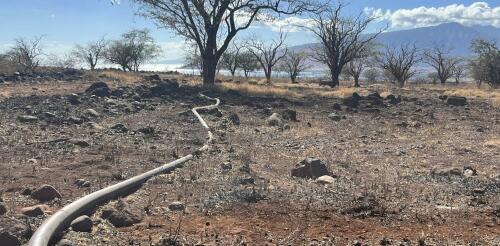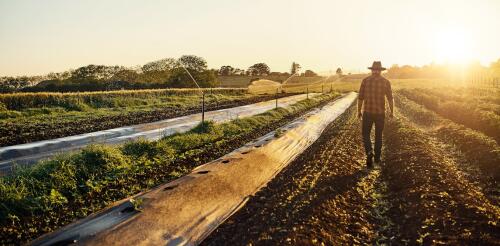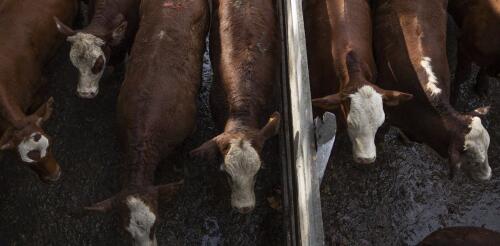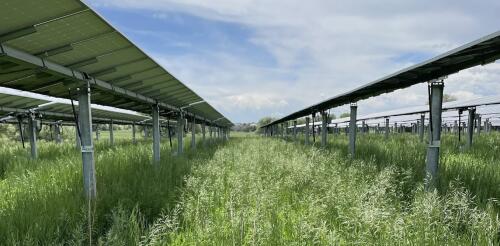Livestock
The wildfires that burned across Maui, Hawaii, in August 2023 became the deadliest conflagration in the United States in more than a century. While the harm to homes and tourism drew the most attention, agriculture was also heavily affected across the island, and the harm did not stop once the flames were out. In some cases, fires smoldered underground for weeks. Water systems were destroyed, and some were contaminated in ways scientists are only beginning to understand. Two weeks after the Maui fires began, they were still smoldering below ground. Andrew Whelton/Purdue University, CC BY-ND As an environmental engineer, I work with communities affected by wildfires and other disasters. I also led a team of university and public works professionals to assist in Maui’s response to the fires. In a new study based on that effort, my team worked with the Hawaii Department of Agriculture to assess d...
Food’s role in climate change has emerged as one of the defining challenges of our time. The journey of a steak, fruit or salad from the vast expanses of agricultural lands to the plates on our tables leaves a significant footprint on the environment. As earth, climate and atmospheric scientists, we track global greenhouse gas emissions and just published the most comprehensive assessment yet of a powerful greenhouse gas from food production: nitrous oxide, or N₂O. After carbon dioxide and methane, N₂O is the most consequential greenhouse gas humans are releasing into the atmosphere. While there is less N₂O than carbon dioxide in the atmosphere, it is 300 times more powerful at warming the planet, and it remains in the atmosphere, holding in heat, for over a century. Today, atmospheric N₂O levels are about 25% higher than before the Industrial Revolution, and they’re still rising at an accelerating rate....
In Argentina, where beef is a symbol of national pride, a government-led partnership has started certifying certain livestock as carbon neutral. It’s a big step that shouldn’t be underestimated, but getting the certification process right is crucial. The world’s livestock sector is a key driver of climate change, contributing around 12% of global greenhouse gas emissions. Two-thirds of agriculture’s annual greenhouse gas emissions come from livestock, with raising cattle for meat typically being the most emissions-intensive activity. While shifting diets to plant-based foods and alternative proteins can help reduce emissions, global meat consumption is growing with an expanding population and rising prosperity. There are ways that livestock producers can reduce those emissions. However, beyond social pressure, ranchers have few incentives to do so. Unless those steps to reduce emissions also increase productivity, they typically become costs with little...
As societies look for ways to cut greenhouse gas emissions and slow climate change, large-scale solar power is playing a central role. Climate scientists view it as the tool with the greatest potential to reduce carbon dioxide emissions by 2030. In the U.S., the Department of Energy predicts that solar will account for nearly 60% of all new utility-scale electricity-generating capacity installed in 2024. But ideal locations for solar development often overlap with croplands or grasslands used for livestock grazing. Typically, large-scale solar arrays are designed to maximize energy generation, without much consideration for the ecosystems in which they are placed. For example, grading land and removing vegetation can cause erosion and send runoff into waterways. Solar developers have been fined for such environmental violations in Georgia, Massachusetts, Alabama, Idaho and Illinois. There also are concerns about how large solar installations affect animal movement patterns...
Strong winds spread the largest wildfire in Texas history across more than 1 million acres of rangeland in the Panhandle, the heart of the state’s cattle-producing region, and into Oklahoma in late February 2024. Light precipitation on Feb. 29 helped firefighters as they tried to contain the Smokehouse Creek Fire and other blazes threatening homes and livestock, but the heat and winds picked up again on March 2. At least two people died and scores of structures, including homes, burned. Karen Hickman, a grassland ecologist at Oklahoma State University and president of the Society for Range Management, explained why the fires spread so fast, the risks to livestock and how quickly these ecosystems can recover. How did the fires spread so far so quickly? This region of Texas and Oklahoma is mostly rangeland where cattle graze. A combination of higher-than-average temperatures and low humidity had dried out the dormant plants. When the winds picked up following a couple of ho...




